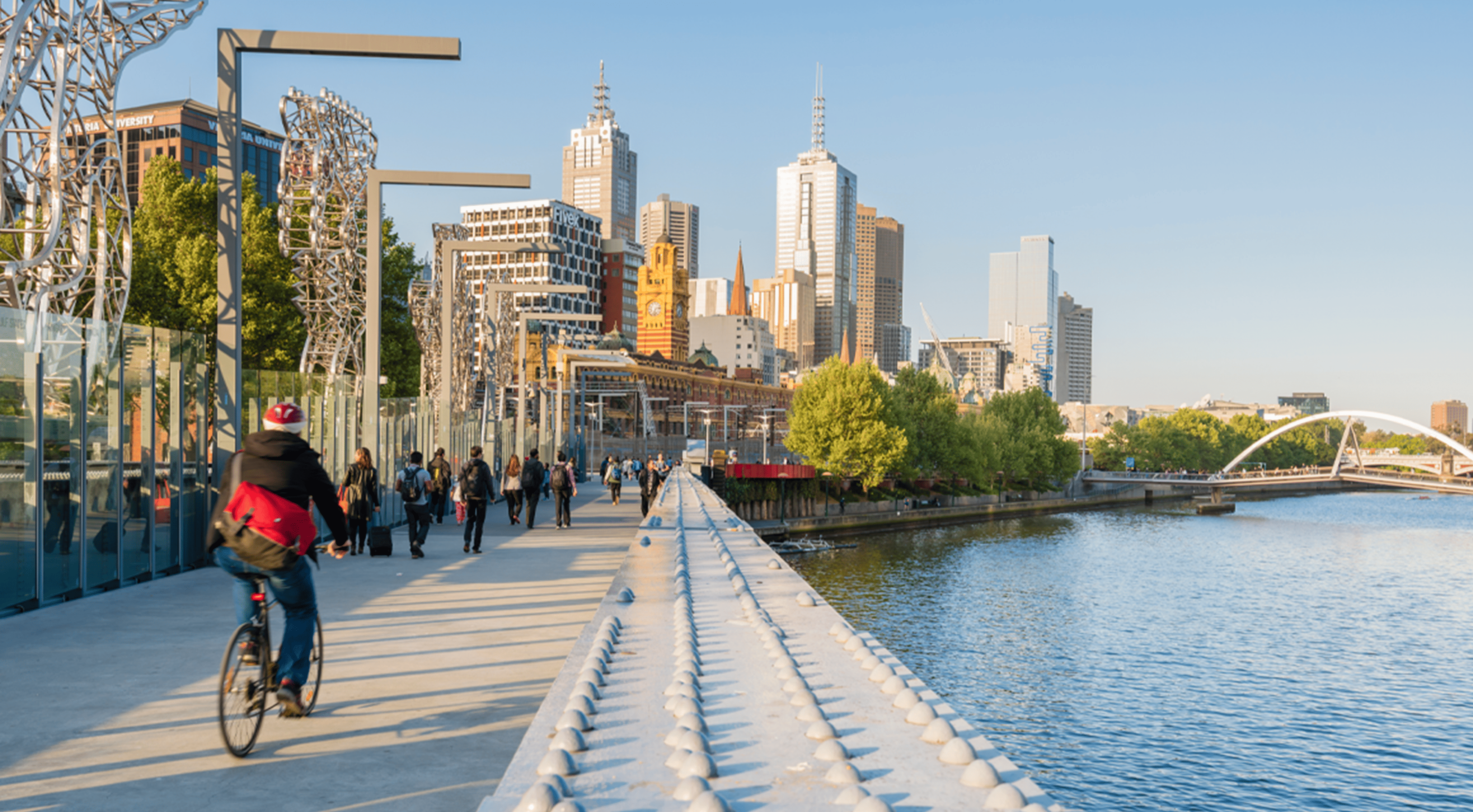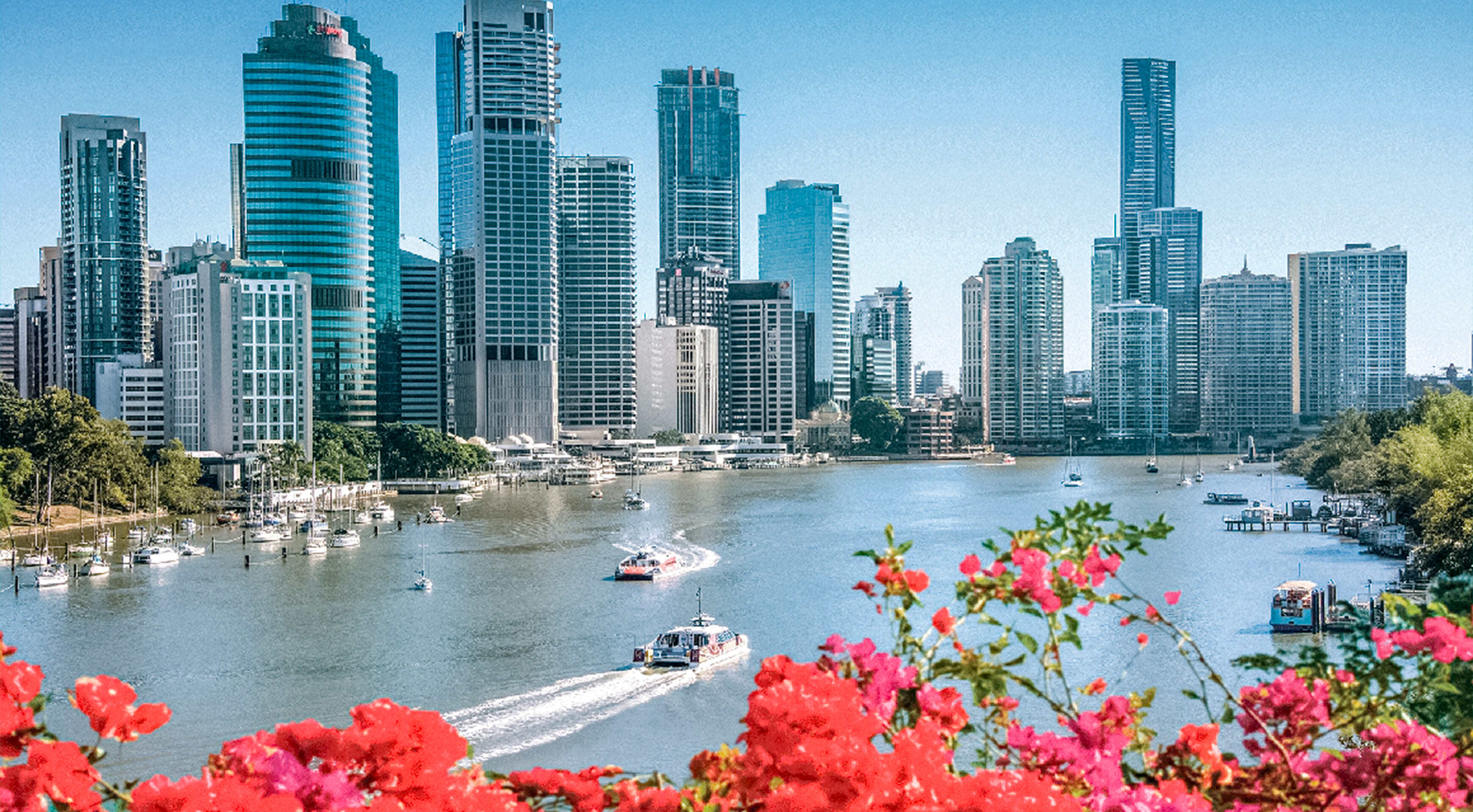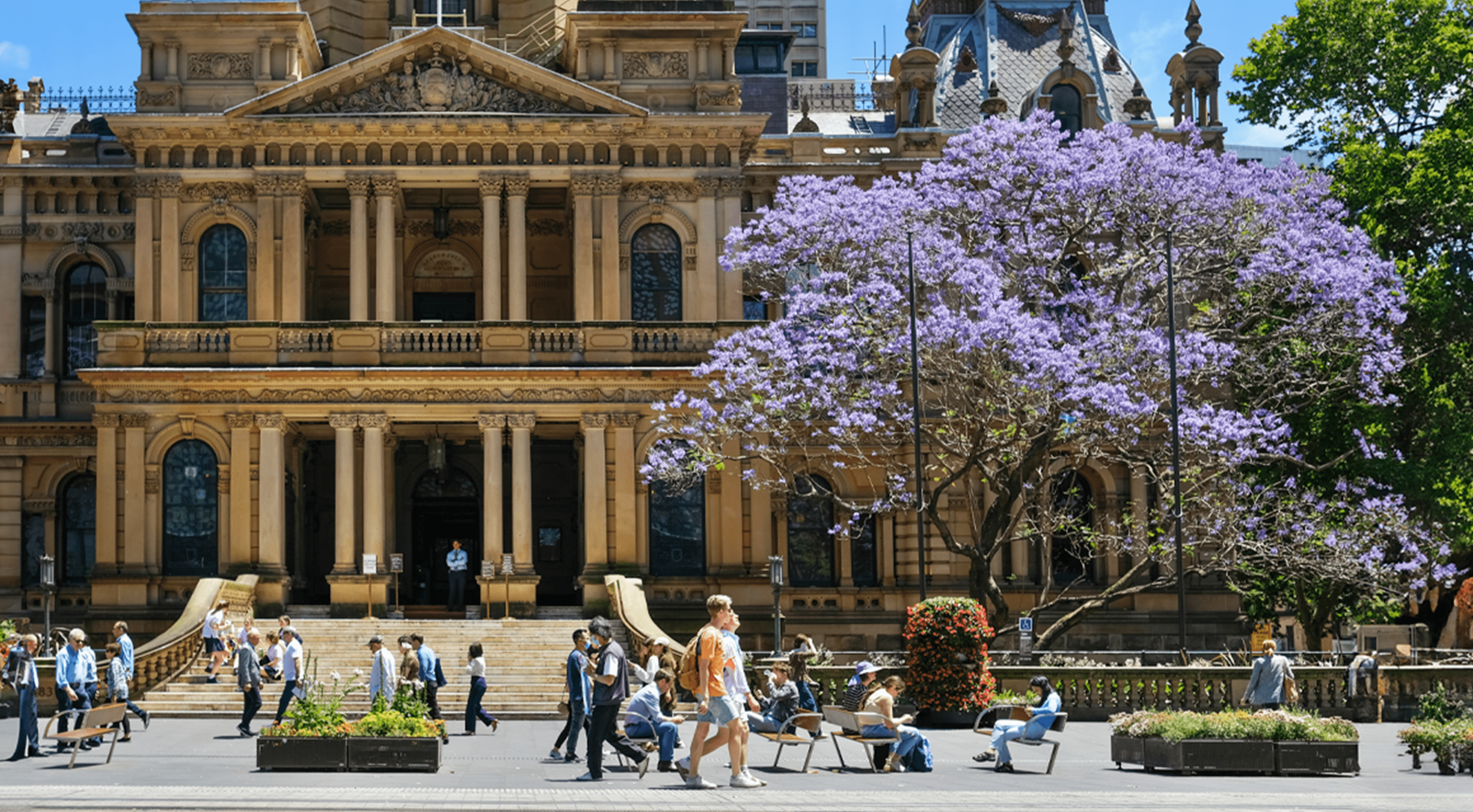Features > Property News & Insights > Buying Guides
Is Spring the perfect time to buy property in Melbourne?

KEY POINTS
- Despite a city-wide slowdown, units in some affordable Melbourne suburbs reasonably close to the CBD represent great value for home-owners and investors and have excellent prospects for future capital growth More of these properties are coming onto the market for sale in Spring, giving home-buyers and investors more choice
- Spring 2024 presents a golden opportunity, as high interest rates and a mistaken belief that Melbourne property prices may fall a lot further means many potential buyers are sitting on the sidelines, giving those in the market more choices and more room to negotiate on price
- When interest rates are cut—either later this year or early in 2025—many of those sidelined buyers will move back into the market, driving property prices up further
If you suffer from hayfever, you’ve no doubt already had a physical reminder that Spring is here, particularly in Melbourne, which has the dubious title of being the world capital for allergies and hayfever.
However, apart from the city’s Spring pollen load and its notoriously changeable weather, Melbourne has a lot going for it as a place to live and as a property investment destination.
Why Melbourne?
By some measures, the Victorian capital is now Australia’s largest city and is set to grow at a faster pace than many of the other capitals.
Research at Freedom Property Investors shows that over the long term, Melbourne’s median home price generally tracks at around 78% of the Sydney median.
However, a period of muted price growth (city-wide price growth has been only around 10% over the past four and a half years) has seen that gap blow out, with Melbourne now tracking at about 66% of Sydney's median.
We believe that means Melbourne property prices—on average—are about 12% undervalued compared to the city’s long-term fundamentals.
And it’s not just us here at Freedom….
Terry Ryder, the Founder and Managing Director of high-profile property analysts Hotspotting, says he would prefer to invest now in Melbourne rather than in booming Perth.
“We look at the underlying factors, which are forward indicators of price growth; incredibly strong economy, the strongest population growth anywhere in Australia, based on the latest figures from the ABS,... a big uplift in sales activity recently,” he says.
“So, everything's building for the Melbourne market.”
“The big detriment about Melbourne is, of course, the attitude of the idiots who run the state government, who have got a lot of anti-investor policies, and that naturally will deter people.”
“But for those who can get over that hump of the taxes and the general, ‘let's slam investors' attitude…if you can get over all that, you can buy pretty well in Melbourne,” Ryder says.
So, is Spring 2024 a good time to buy property in Melbourne?
My answer is an emphatic “yes”.
I’ll explain why…
Seize the moment
There are more properties on the market in Spring - that’s a given.
CoreLogic reported that auction activity in Melbourne was up significantly on the weekend of August 31st/September 1st, with 1,006 homes taken to market.
“This was the first time we have seen Melbourne break the 1,000 mark since mid-June,” says CoreLogic Australia analyst Caitlin Fono, also noting that “the preliminary clearance rate held up well under the higher volume, rising to 70.0%.”
More properties for sale immediately give you more choice, no matter whether you are a homebuyer or an investor.
Don’t waste your time looking for “bargains”.
They should come to you.
High interest rates, high rents and the cost of living have either forced or scared many potential buyers out of the market, meaning that if you can afford a property now, there’s less competition for quality properties.
Some buyers are also mistakenly sitting on their hands because they think prices in Melbourne, which have eased in recent months, will plummet.
Official interest rates will start coming down either late this year or early in 2025 (some of the banks have already started cutting their fixed term mortgage rates) and I think that once that happens, those buyers currently sitting on the sidelines will have a major dose of FOMO and jump into the market, driving up property prices further.
So if you find a home you like or a great investment grade property, make a silly offer and work up from there.
You may find a nervous vendor might accept a low-ball offer because they are terrified there are suddenly lots of competing properties on the market when there was only a handful in winter.
Where to buy a home now in Melbourne
If you are buying a home, the questions you usually ask yourself are straightforward:
Does this property work for me and my family?
Is it near to everything I need?
So, where can you buy a property in Melbourne that is relatively affordable but has the potential to grow faster in value than other suburbs to give you a speedy increase in capital value?
One of the great things about Freedom Property Investors is that I co-founded the company with Lianna Pan, an actuary and data scientist who insisted that we establish a property advisory with a large research team so the advice we give our members can always be data-driven.
So, I asked our research team to come up with a list of Melbourne suburbs that met the following criteria:
- “Relatively affordable”- We decided to define this by ruling out suburbs where the median price was over 80% of Melbourne’s citywide median dwelling value of $776,044.
- Excellent value growth- According to CoreLogic, dwelling values in Melbourne have actually shrunk by 1% over the last year, so for the Top 5 list, the brief was to find suburbs that are growing and growing fast to allow homeowners to build up equity.
- Commute times- Presuming some residents have to work in the Melbourne CBD, we looked for suburbs where regular commute times should not exceed 30 minutes and where big, non-CBD employment hubs were, preferably, less than 15 minutes away.
- Strong local economy- We considered metrics like infrastructure spending, local employment opportunities, and projected population growth to help determine whether price growth in the suburb would stay strong because of continuing demand.
- While there’s plenty of cheap houses on Melbourne’s sprawling outskirts, commute times to the CBD can be a real drag, so we decided to focus on affordable areas reasonably close to the city with good amenities, “liveability” and good public transport. Therefore we honed in on top areas for apartment living.
This is what the Freedom research team came up with:
As you can see, the suburbs in the Top 5 list for units represent excellent value compared to the over-inflated prices you would pay for a lot of neighbouring suburbs (compare Flemington and Travancore to pricey North Melbourne and West Melbourne), yet they are growing in value at an astounding pace, especially when compared to the way Melbourne’s median home value has actually eased over the past 12 months.
Where to invest now in Melbourne?
If you are an investor, the main questions you should be asking yourself are:
Does this property stack up from an investment point of view - what’s the rental return, what’s the yield, what’s the capital growth potential?
So, the brief to the research team was a list of Melbourne suburbs that met the following criteria.
- Once again, we used the “relatively affordable” definition to rule out suburbs where the median price was over 80% of Melbourne’s citywide median dwelling value of $776,044
- Excellent value growth- The brief was to assume tenants may have to work in the Melbourne CBD. We looked for suburbs where regular commute times would not exceed 40 minutes and where big, non-CBD employment hubs were, preferably, less than 15 minutes away.
- Strong local economy- We considered metrics like infrastructure spending, local employment opportunities, and projected population growth to help determine whether price growth and rental demand would stay strong in the suburbs.
- We looked for suburbs where the current vacancy rate was less than 2%
- We looked for suburbs where rental yields were at least 4.5%
- Again, while there are plenty of cheap houses on Melbourne’s sprawling outskirts, we decided to focus on affordable areas reasonably close to the city with good amenities, “liveability”, and good public transport. Therefore, we honed in on top investment areas for apartments.
This is what we came up with:
You’ll agree these relatively affordable Melbourne unit markets present extraordinarily good investment metrics.
Yet many existing landlords in Melbourne have decided to sell up, citing Victoria’s supposedly “anti-investor” climate.
This is at a time of strong population growth and some of the highest annual rental growth in Australia.
My advice is, don’t listen to all this “noise”.
Look at the numbers.
If these people are prepared to cut their losses and sell an investment-grade property that stacks up for you financially at a bargain basement price, go for it.
The take-out
While hopefully the figures we have come up with are useful, the bottom line is that you have to do your due diligence when it comes to real estate.
We recommend getting some good independent advice, particularly if you are looking at building a property investment portfolio.
Nevertheless, Spring is here, and it’s a great time to buy residential real estate.
Don’t listen to what the media are saying about the possible direction of property prices, stories about a “cooling market,” or whining about “anti-investor policies.”
Melbourne’s long-term fundamentals are sound, and the simple truth is that the property you like now will probably never be for sale again cheaper than it is today.
Stay Up to Date
with the Latest Australian Property News, Insights & Education.




.png?width=292&height=292&name=Copy%20Link%20(1).png)
 SIGN UP FOR FREE NEWSLETTER
SIGN UP FOR FREE NEWSLETTER







.jpg?width=1920&height=1080&name=Warning%2c%20You%20Might%20Be%20Facing%20Higher%20Taxes%20Soon%20(1).jpg)





.png?width=1920&height=1080&name=Rate%20Drops%20Signal%20BIGGEST%20Property%20Boom%20in%20DECADES%20(1).png)

.jpg?width=1920&height=1080&name=Labor%20vs%20Liberal%20These%20Housing%20Policies%20Could%20Change%20the%20Property%20Market%20Forever%20(1).jpg)
.jpg?width=1920&height=1080&name=QLD%20Slashes%20Stamp%20Duty%20Big%20News%20for%20Investors%20%26%20Home%20Buyers%20(1).jpg)
.jpg?width=1920&height=1080&name=Trump%20Just%20Slapped%20Tariffs%20%E2%80%93%20Here%E2%80%99s%20What%20It%20Means%20for%20Australia%20(1).jpg)
.jpg?width=1920&height=1080&name=Federal%20Budget%202025%20More%20Debt%2c%20No%20Housing%20%E2%80%93%20Here%E2%80%99s%20What%20You%20Need%20to%20Know%20(1).jpg)
.jpg?width=1920&height=1080&name=Australias%20Housing%20Crisis%20is%20about%20to%20get%20MUCH%20Worse%20(New%20Data%20Warns).jpg)
%20(1).jpg?width=1920&height=1080&name=Australias%20RENTAL%20CRISIS%20Hits%20ROCK%20BOTTOM!%20(2025%20Update)%20(1).jpg)
%20(1).png?width=1920&height=1080&name=Is%20Adelaide%20Still%20a%20Good%20Property%20Investment%20(2025%20UPDATE)%20(1).png)
.jpg?width=1920&height=1080&name=RBA%20Shocks%20with%20Rate%20Cuts!%20What%E2%80%99s%20Next%20for%20Property%20Investors%20(1).jpg)
%20(1).jpg?width=1920&height=1080&name=I%20Predict%20The%20Feb%20Rate%20Cut%20(My%20Price%20Growth%20Prediction)%20(1).jpg)
.png?width=1920&height=1080&name=Why%20Property%20Prices%20Will%20Rise%20in%202025%20Market%20Predictions%20(1).png)
.jpg?width=1920&height=1080&name=Why%20Investors%20Are%20Choosing%20Apartments%20Over%20Houses%202%20(1).jpg)
.jpg?width=1920&height=1080&name=Why%20Rate%20Cuts%20Will%20Trigger%20A%20Property%20Boom%20(1).jpg)
.jpg?width=1920&height=1080&name=Retire%20On%202Million%20With%20One%20Property%20(Using%20SMSF).jpg)
.jpg?width=1920&height=1080&name=4%20Reasons%20Why%20You%20Should%20Invest%20in%20Melbourne%20Now%20(1).jpg)
%20(1).jpg?width=1920&height=1080&name=Old%20Property%20vs%20New%20Property%20(Facts%20and%20Figures%20Revealed)%20(1).jpg)
%20(1).jpg?width=1920&height=1080&name=Will%20The%20New%20QLD%20Govt%20Create%20a%20Property%20Boom%20or%20Bust%20(My%20Prediction)%20(1).jpg)
%20Scott%20Kuru%20(1).jpg?width=1920&height=1080&name=Inflation%20Hits%20Three-Year%20Low%20(Will%20RBA%20Cut%20Rates%20Soon)%20Scott%20Kuru%20(1).jpg)
.jpg?width=1920&height=1080&name=How%20to%20Buy%20Investment%20Property%20Through%20SMSF_%20The%20Ultimate%20Guide%20(1).jpg)
.jpg?width=1920&height=1080&name=Victoria%20Slashes%20Stamp%20Duty%20Melbourne%20Set%20to%20Boom%20Scott%20Kuru%20(1).jpg)
.png?width=1571&height=861&name=Are%20Foreign%20Buyers%20Really%20Driving%20Up%20Australian%20Property%20Prices%20(1).png)
.jpg?width=1920&height=1080&name=The%20Single%20Factor%20That%20Predicts%20Property%20Growth%20Regions%20(1).jpg)
%20Scott%20Kuru%20(1).jpg?width=1920&height=1080&name=My%20Prediction%20On%20Rates%20%26%20Negative%20Gearing%20(Market%20Crash)%20Scott%20Kuru%20(1).jpg)

-1.png?width=1920&height=1080&name=Major%20Banks%20Cut%20Rates%20Will%20RBA%20Follow%20Suit%20(Sept%20Rate%20Update)-1.png)
%20Scott%20Kuru-1.png?width=1920&height=1080&name=Rate%20Cut%20Coming%20What%20New%20Zealands%20Move%20Means%20for%20Australia%20(Sept%20Prediction)%20Scott%20Kuru-1.png)
%20(1).jpg?width=1920&height=1080&name=Buy%20when%20the%20interest%20rates%20are%20high!%20(Why%20you%20must%20buy%20now!)%20(1).jpg)
.jpg?width=1920&height=1080&name=Carms_Revised%20Taxes%20Due%20Aug%209%20YT%20Thumbnail02%20(1).jpg)
.jpg?width=1920&height=1080&name=Carms_Too%20Little%20Too%20Late%20Aug%207%20YT%20Thumbnail01%20(1).jpg)









.jpg?width=1920&height=1080&name=Carms_Rate%20Drop%20In%20July%20Jun%2010%20YT%20Thumbnail02%20(1).jpg)
.jpg?width=1920&height=1080&name=Carms_Own%20a%20Property%20V6%20Jun%205_YT%20Thumbnail%20(1).jpg)









.png?width=1920&height=1080&name=Artboard%201%20(3).png)






.jpg?width=1920&height=1080&name=YT%20thumbnail%20%20(1).jpg)

